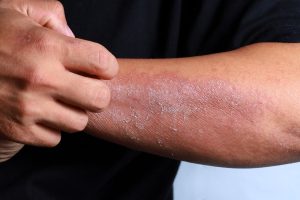When it comes to dental procedures, precision and accuracy are paramount. One essential tool that plays a crucial role in ensuring these qualities is the needle holder dental instrument, also known as the needle driver.
This instrument is designed to securely hold needles during various dental procedures, providing dentists with the necessary control and stability.
We will explore the importance and functionality of the needle holder instrument, highlighting its role in achieving successful dental treatments.
Importance of Dental Instruments in Dentistry
Dental procedures require attention to detail and appropriate instruments. A needle driver is a vital tool that contributes significantly to the success of dental treatments.
Needle drivers give dentists the control and stability to execute precise and accurate needle placement during procedures.
This level of precision is crucial to:
- Minimize patient discomfort
- Ensure efficient treatment delivery
- Achieve optimal treatment outcomes
Some models feature a ratchet mechanism, which provides enhanced grip and needle driving. Others may have a tungsten carbide insert, increasing the instrument’s durability and performance.
The Key Role of a Needle Holder in Dental Procedures
A needle holder dental instrument is crucial in dentistry, particularly suturing or injecting anaesthesia. It aims to securely grip and manipulate needles, allowing dental professionals to make precise and controlled movements during treatment.
With its ability to firmly hold needles, dentists can work quickly and confidently, eliminating the risk of slippage or mishandling. This saves time and enhances patient safety by minimizing accidental needlestick injuries.
For added convenience and comfort, a dental instrument may be designed with additional features, such as ergonomic handles or locking mechanisms.
Choosing the right dental instrument that suits the dentist’s preferences and technique is crucial, further highlighting the significance of this instrument in dental practice.
Features and Functionality of a Needle Holder
Dental professionals should consider various features and functionalities when selecting a dental needle holder to enhance their efficiency and comfort during dental procedures.
Here are some key aspects to look out for:
Ergonomic Handles
Many modern needle-holder dental instruments are designed with ergonomic handles that provide a comfortable grip during use. This feature reduces hand fatigue and allows for better control and precise movements, ultimately improving the dentist’s and the patient’s overall treatment experience.
Locking Mechanism
Some needle-driving instruments have a locking mechanism that securely holds the needle. This feature ensures that the needle does not slip or move during suturing, adding an extra layer of safety and accuracy.
Size and Weight
Dentistry holders are available in various sizes and weights to accommodate the dentist’s preferences and technique. Choosing a needly driving instrument that feels comfortable and well-balanced in hand is vital, as this can significantly impact the dentist’s skill and control.
Material and Durability
Needle holders are usually made from high-quality stainless steel, ensuring durability and longevity. Choosing a resistant to corrosion and easy to clean and sterilize is essential for maintaining a sterile environment and preventing contamination.
Investing in a high-quality needle-driving instrument improves efficiency and contributes to the overall success of dental procedures.
Proper Care and Maintenance of Needle Holders
Proper care and maintenance of dentistry instruments are crucial to ensure their longevity and optimal functionality.
Here are some essential tips for maintaining your oral surgical instruments:
Cleaning: After each use, thoroughly clean the dental needle holder using a brush and warm soapy water. Pay close attention to any debris or residue stuck in the hinge mechanism or other small crevices. Rinse the instrument thoroughly to remove all soap residue.
Sterilization: After cleaning, sterilize the holder using an autoclave or other approved sterilization methods recommended by the manufacturer. This step is vital to eliminate potential bacteria or pathogens that may cause cross-contamination.
Inspect for damage: Regularly inspect the needle holder dentistry instrument for any signs of damage, such as loose parts, rust, or instrument distortion. Contact the manufacturer or supplier for repair or replacement if any issues are found.
Proper storage: Store the needle-driving instrument in a designated, clean container or tray, away from other instruments that may cause damage. Avoid placing heavy objects, leading to deformation or misalignment.
Remember, well-maintained dental instruments are an investment in the quality of your clinical practice.
Conclusion
A high-quality needle holder is an indispensable tool in dental practice. Its functionality directly impacts patient safety, comfort, and the overall success of dental procedures. By providing a secure grip and precise control, a well-designed needle holder enables accurate needle placement and minimizes the risk of complications such as tissue damage or nerve injury.
FAQs
What is the difference between needle holders and forceps?
While forceps are adaptable tools used to grip, hold, or manipulate various surgical materials, needle holders are used to hold and suture needles safely.
What is the most common type of needle holder used in dentistry?
The most common type of needle holder is the Meyo-Hedger.
What are the different types of needle holders used in dentistry?
The different types of dental needle holders include Arugga, Baumgartner, Boynton, Castroviejo, Crile Wood, Mathieu, and Olsen Hegar needle holders.
What to consider while choosing a dental needle holder?
Your hand size and the process will suggest which dental needle holder is best for you. Consider using a micro needle holder with delicate jaws for suturing in confined places. A Castroviejo or Mayo Hegar technique is a good option for general suturing. Take into account a locking mechanism for increased control and grip.











